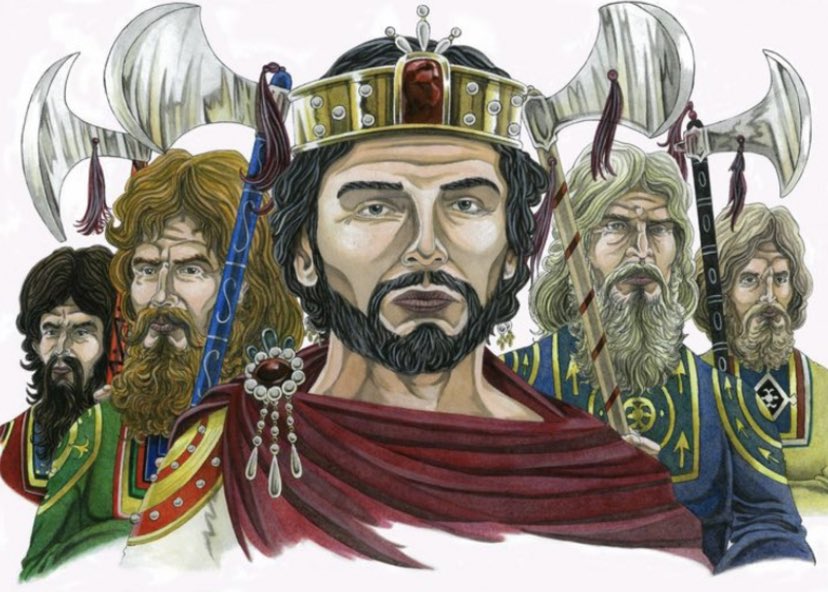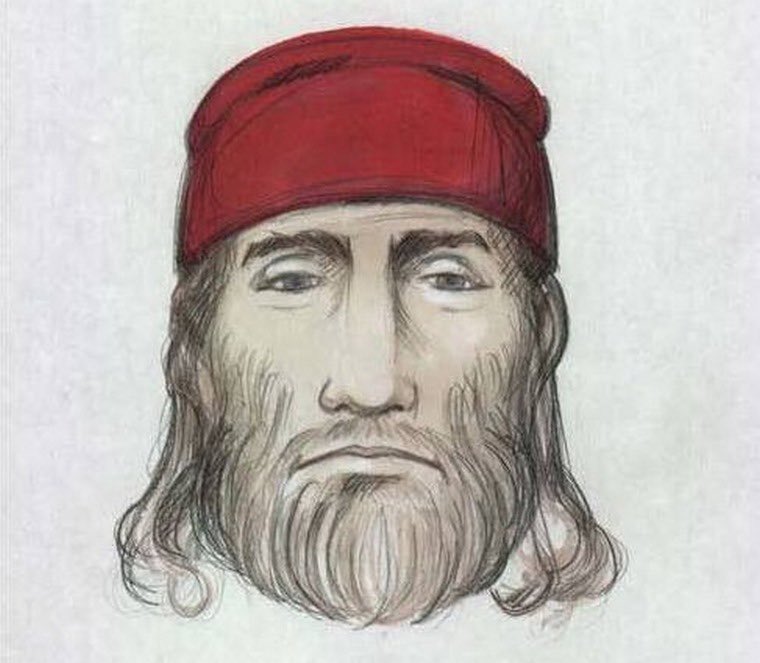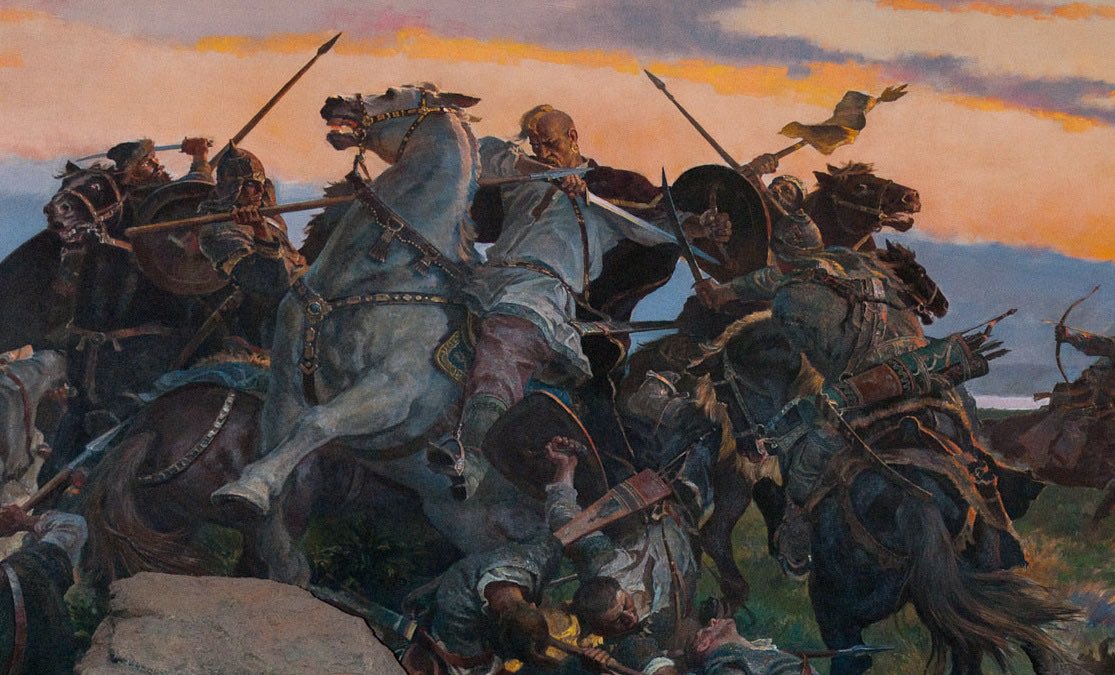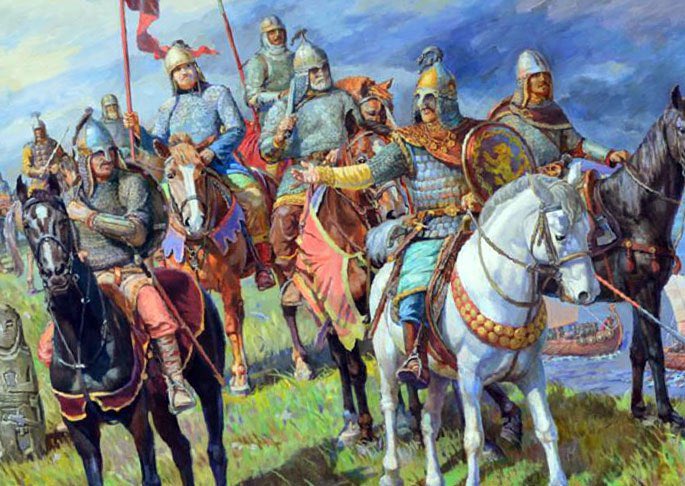
Did you know there was a short-lived Norman kingdom in Anatolia? Let’s explore Roussel de Bailleul and his fascinating tale of adventure, betrayal, and daring. 

Roussel de Bailleul was the most notable of the Norman mercenaries in Byzantine service. From his bravery at the Battle of Cerami to the disastrous Manzikert Campaign, Roussel witnessed some of the most important events of his day. 

Roussel enters the historical record in the service of Roger de Hauteville, settling in Terra d’Otranto in Apulia. Roussel followed Roger on his fateful campaign in Sicily, serving as one of his most trusted lieutenants. 

At the Battle of Cerami, Roussel roused the outnumbered Normans to stand firm against the frightening charge of the enemy. After the Saracens broke, Roussel urged Roger to pursue the fleeing Zirids & Kalbids, compounding the stunning Norman victory with ruthless slaughter.
https://twitter.com/LandsknechtPike/status/1403318713487663106
Either exiled by Italo-Norman foes or seeking the wealth of Byzantine service like so many others, Roussel re-enters the narrative as “Ourselios” in Anna Comnena’s seminal “Alexiad.” Roussel commanded a group of Norman cavalry serving as mercenaries for the Byzantines. 

Roussel and the Normans joined the Emperor Romanos on the Manzikert Campaign. Romanos, underestimating the size of Alp Arslan’s force, dispatched Roussel’s 500 men & many elite warriors to Khliat to forage & plunder. 

Roussel was not present for the devastating defeat and his intact forces would play a key role in the post-Manzikert political order. In 1073, Roussel was sent to the interior of Anatolia with Issac Komnenos, commanding the famous Norman heavy cavalry. 

The army gathered at Caesarea where Issac punished a Norman soldier for a disciplinary offense. Roussel and his 400 Normans left the army in the dead of night. Issac was furious and considered sending a force under his brother Alexios to chase them. 

Issac would not get the chance, soon he met the Seljuks in battle. The Seljuks annihilated his army and captured him. Alexios barely escaped with his life. 

Roussel’s defection could have been opportunistic greed, or he could have been fed up with perceived injustices from the Byzantines. The treatment of his men by Issac & the suspected poisoning of Crispin, the previous Norman commander, must have factored into his decision-making. 

With the Byzantine army crushed, and Seljuks raiding the countryside, Roussel saw an opportunity. The Normans defeated a Seljuk force outside Ancyra and Roussel took the town, declared himself “Prince,” and began the process of building his own Norman state. 

Roussel gathered support from many in Galatia, he provided protection from Seljuk raids, something the Byzantine Army had failed to do. Attaleiates states that Roussel “gathered a considerable force made up of partly his own countrymen and partly of other nationalities.” 

Michael VII, enraged by this insolence, sent an army of 12,000 men under his uncle, John Doukas. The Emperor dispatched 1,500 Varangians & 500 Western mercenaries as a part of his uncle’s army, determined to crush Roussel before he could sink his roots in the wealthy region. 

Roussel assembled his army of 3,000 men, & met the Byzantines at the Zombos Bridge, near Amorium, on May 10th, 1074. John Doukas offered Roussel amnesty if he surrendered, he refused. The inexperienced Doukas moved across the river to attack rather than wait for reinforcements. 

In the early hours of the morning Roussel rode out to the Franks on the western flank of Doukas’s army, urging them to defect, which they did & flanked the Varangians at the center of the Byzantine line. The Varangians fought with such ferocity they “broke their spears.” 

Panicking, Botaneiates, the Strategos of the Anatolikon, fled with most of the men back to his estate, leaving John & his son Andronikos to be captured by Roussel. Roussel, seeing an opportunity, proclaimed John as emperor, & set off to place his puppet in Constantinople. 

This was unacceptable for Michael VII. With Roussel sacking Chrysopolis in support of John, Michael turned to the Seljuks and offered to recognize their conquests in Cappadocia if they stop the rebellion. The Seljuk leader, Suleman, agreed & ambushed & captured John & Roussel. 

However, before the Byzantines could arrive with the money, Roussel’s wife, Matilda, arrived with gold to buy her husband’s freedom. Suleman obliged and set Roussel free. John was turned over & the civil war ended. However, Michael was determined to end Roussel’s kingdom. 

Michael gave Kars, Tao, and Theodosiopolis to the Georgian King, George II, for defeating Roussel. The fortresses were taken by Georgia, but their army failed to defeat Roussel, many defecting to the charismatic Norman. Roussel’s kingdom was proving resilient. 

In a last ditch effort, the 20 year-old Alexios Komenenos was dispatched with a small force & little funds to deal with Roussel once and for all. Roussel’s ability to sponsor imperial contenders & hold large swathes of Anatolia was a grave danger to the Empire. 

Alexios turned to the Seljuks and offered a large reward for the recapture of Roussel. Suleman agreed and captured Roussel after inviting him and his men to a feast. The Seljuks brought Roussel to Emesa, but Alexios did not have the funds to pay them. 

Alexios turned to the citizens of Emesa to raise the money, but they preferred Roussel to the Imperials, under his rule they had been protected from Turkish raiders. The wily Alexios presented a blind-folded Roussel to the city, saying he was blind & now unable to protect them. 

The ruse worked, and Alexios convinced the citizens to raise the funds to pay the Turks & throw their lot with the Imperial government. Alexios returned to Constantinople in 1076 victorious, and Roussel, a bulwark to the Seljuks, was thrown in prison. In 1077, Roussel was freed. 

Short on capable commanders, Roussel was given a battalion to lead against the rebel Botaneiates. Roussel defeated & then joined the rebel. However, he was captured by the Seljuks again & finally turned over & executed by the Byzantines. 

Roussel was a brilliant leader & warrior, capable of creating and holding a kingdom in the blood lands of Anatolia with his elite Norman knights. Although his kingdom would fall it spread mistrust between Byzantines & Western warriors & served as a blueprint for Outremer. 

• • •
Missing some Tweet in this thread? You can try to
force a refresh




















